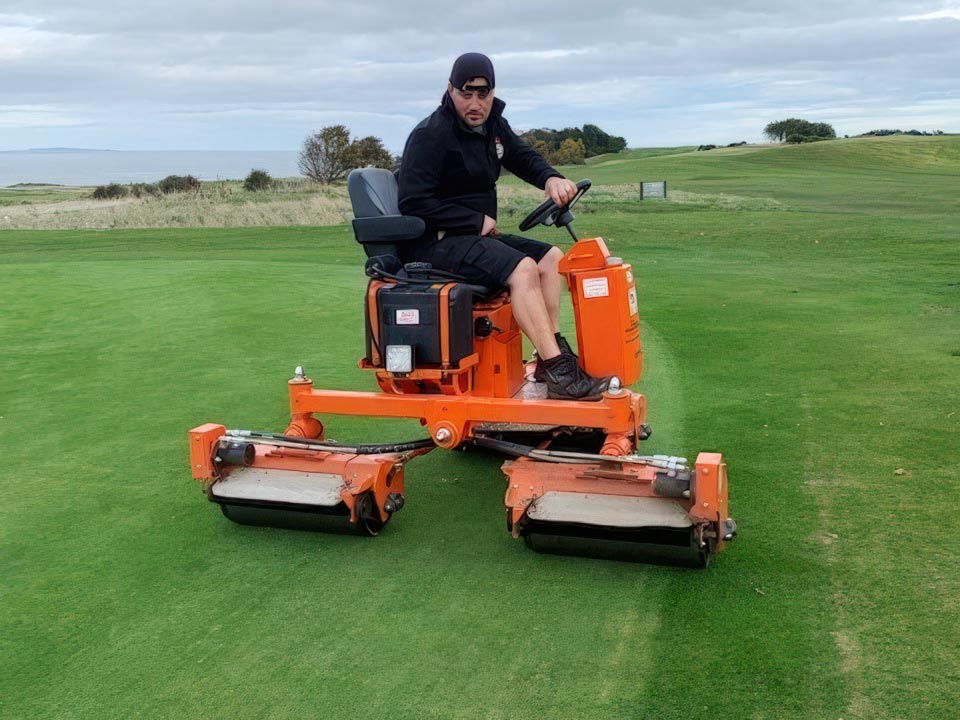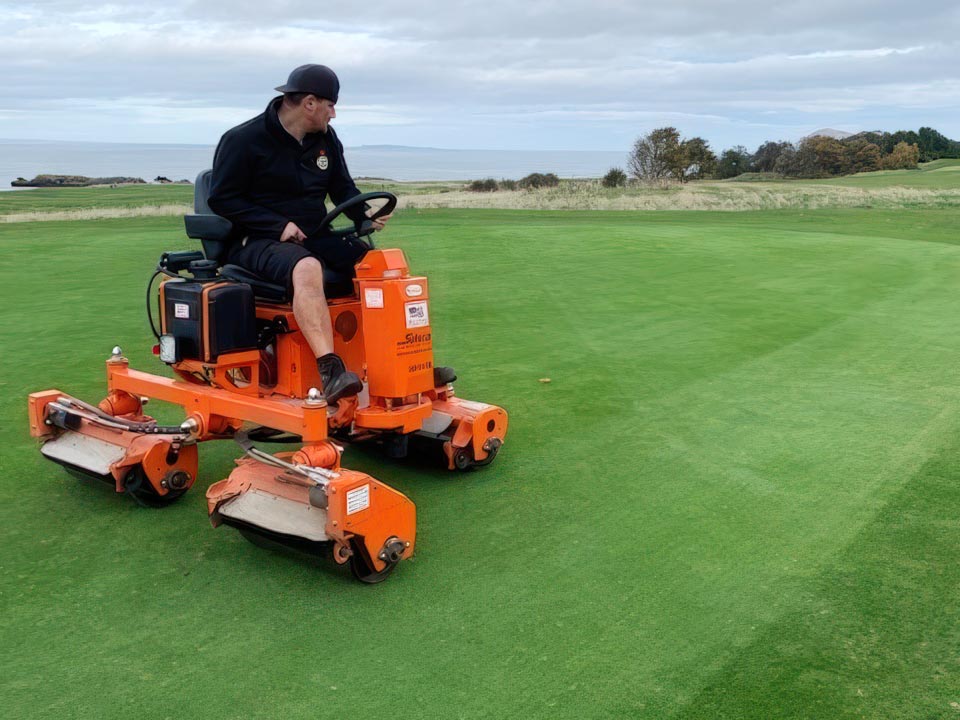Des Kerr has had opportunities to work with a succession of greens rollers in his 14 years at the glorious Glen Golf Club on the rolling cliffs of North Berwick. But it is only in recent months that he has found what he now regards as the ultimate rolling solution in the shape of the Salsco HP11-III. The roller that has made such a big impact at the course – and indeed elsewhere along East Lothian’s celebrated Golf Coast – was supplied by the Thomas Sherriff dealership and sourced from Lister Wilder as Salsco’s exclusive UK importer.
“The golfers want fast, smooth greens and the Salsco has proved to be a fantastic tool in our bag,” says Course Manager Des. “We put a lot of sand on our greens and need to work it into the surface to get them back to normal as quickly as possible. The great thing about the Salsco is that its rollers grip well without spinning, so it leaves a clean surface even in wet conditions.
“I had looked around at what was available and was concerned in particular about reliability issues. So when I heard that another local course had bought a Salsco they were happy with I did some further research online. To succeed in the American market it has to be good, so I asked Dougie Archibald at Sherriffs to organise a demo and was very impressed.”

The Salsco is ideally suited to the challenges faced by a links course like The Glen, which follows the undulating cliff contours on the eastern side of North Berwick. Golf was first played there in the 17th century, although a nine-hole course did not come into being until 1894. It was extended to 18 holes in 1906 with a design provided by five times Open Champion, James Braid and his design partner Ben Sayers. Suiting players of all abilities, the 6,275-yard (par 70) course is challenging, but fair.
While the golf is of high quality, the views out across the Firth of Forth are spectacular and include the mighty Bass Rock, the world’s largest northern gannet colony. The best place to enjoy all that magnificence is perhaps at the signature par-three 13th hole where you drop steeply from the tee to a superb green setting.
Rises and falls of that sort demand a lot of a roller, and Des has been delighted to see how the Salsco deals with the critical challenge of finding grip on inclines without causing damage to a fragile surface underlaid by varying soils and geology.
“The big challenge for any machine is to cope with our hilly contours, especially if it is wet,” he says. “The fact that the Salsco has all three rollers doing the driving means that it can get up hill and down dale fantastically.

“It really does do a great rolling job. We have just applied 30 tonnes of sand to the surfaces. Previously, I would expect to have to wait a week before I could have taken the old rollers over the greens unless it was bone dry and sunny with a bit of wind. But with the Salsco I can take the roller over to true up the surface the day after we have treated, and there’s minimal mess.
Des also likes the fact that he can vary the overall kerb-weight by filling the rollers with water. “At the heavier end it achieves a better roll that gives faster and smoother greens,” he says. “But there are times of year when that can be detrimental to long term turf health through soil compaction and bruising of the grass leaf, so we can reduce the weight by removing some water. It still gives you a good roll but eases the stress on the putting surface.”
He adds: “It is light years ahead of the other machines and is very solid – you can tell that just by looking at it. It’s got a nice strong frame and fits nicely into the trailer that comes with it. The operators that have used it have all said positive things.”
The other big benefit Des lists is that it has reduced the staff time needed to roll all 18 greens from three hours to nearer two, putting valuable time back in their day.
